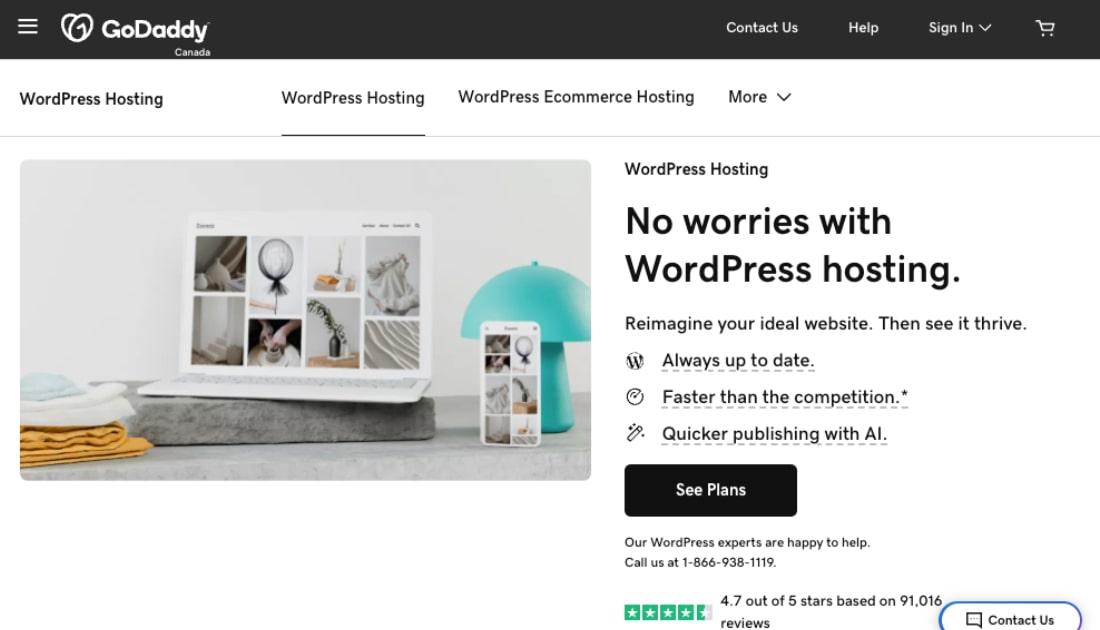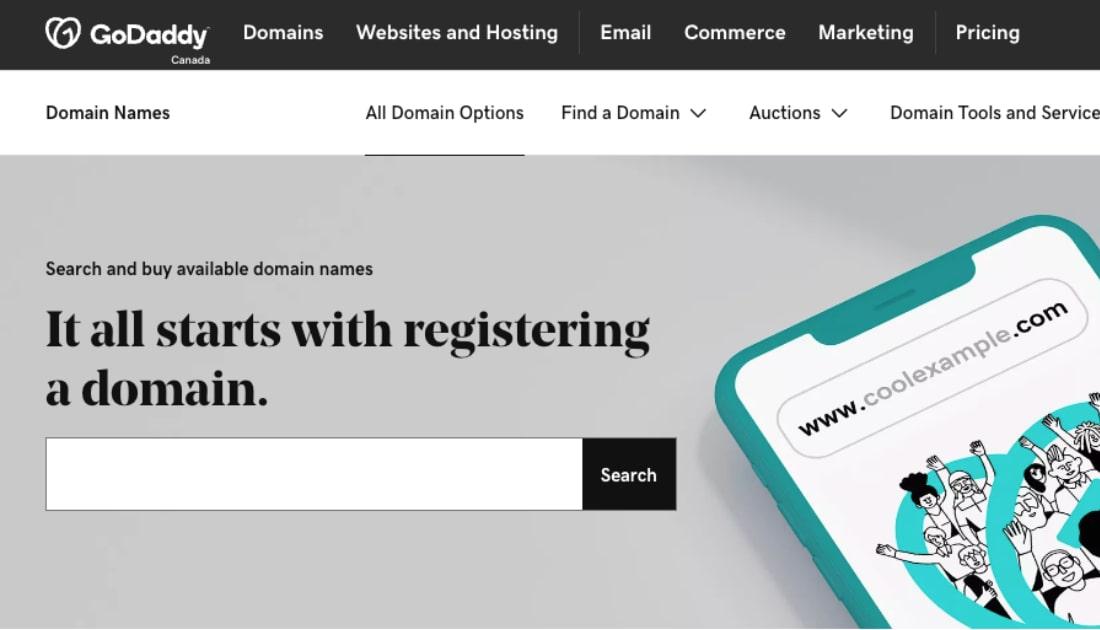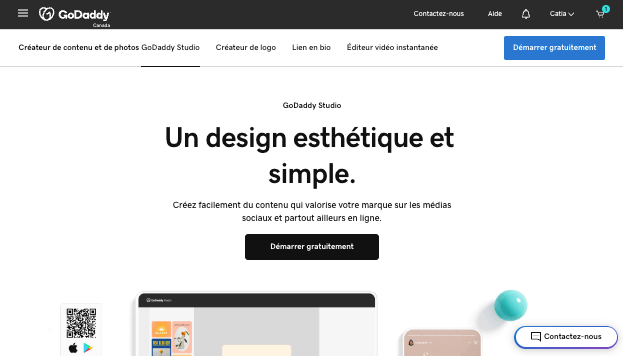If you own a small business, you may wonder how to bring more customers in the door. That’s an easy one: blog. The internet is the first place many people go when they want a question answered or are looking for tips or advice. They’ll ask, What are the hottest fashion trends? Are soy candles healthier than beeswax candles? What kind of car insurance do I need? By publishing blog posts that answer their questions, you’ll naturally draw them to your business. Read on to learn how to set up a WordPress blog that will do just that.
Small business owners can benefit from starting a blog because it:
- Positions you as a thought leader and industry expert.
- Captures new leads and sends them to your website.
Whatever you do, you know things other people want to know — like tips, inside secrets, what the trends are. You’re perfectly positioned to give recommendations, provide insight into your niche field and share your wealth of knowledge. This is what blogging's all about.
Start a WordPress blog in 4 steps
Learning how to WordPress is the topic of countless posts and tutorials. But here are the basic steps.
-
Free or paid?
-
Choose your theme.
-
Add a few select plug-ins.
-
Write your first post.
To be successful at blogging, you must post fresh, interesting articles continuously over time. Here’s how to get started.
How to start a blog with WordPress
Before we get to the details of how to set up a WordPress blog, let’s take a moment to consider what you’d like to call your blog. You might want to incorporate your business name, or pick something that fits with the objective of your blog.

For example, Hudson’s Bay calls their blog The Point. It’s a mix of fashion, events, beauty and style. And it’s cheeky — they “get to the point” with their posts.
Mr. Cavaliere, founded by Jonathan Cavaliere, is a lifestyle blog that covers everything from time management to men’s fashion and cocktail recipes. Canada travel writer Mariellen Ward named her blog BreathDreamGo. As you can see, what you name it matters.
Editor’s note: If you already have a website, there’s no need to register a separate domain name for your blog. Just create a sub domain off your primary domain name.
1. Free or paid?
Right here, right now, you can set up a WordPress blog for free. This is great for those of us who like to try things before we dive in.
You should know, however, that a free blog comes with limitations:
- There are a limited number of themes (pre-built blog layouts designed for easy startup).
- You can’t customise your blog using the plug-ins you’d get if you paid for your hosting.
- Your web address will be long and hard to remember — YourBlogName.495474480.Wordpress.com, for example.
So take a moment and think about what kind of blog you want. Do you eventually see it growing? If so, you’ll need to get a domain name and a web hosting plan to have access to all the features you’ll need over the long haul. Both can be had for a nominal fee.
Looking for the easiest way in? Consider Managed WordPress. GoDaddy not only downloads and installs WordPress for you, but takes care of routine updates and security patches. You’ll never outgrow it, either. You can add an online store, Office 365 email and enhanced website security if you choose. Just pick a WordPress Hosting plan and you’re good to go.
Pro tip: Learn how you can receive a free domain name with an annual WordPress Hosting plan from GoDaddy.
If you want free
To start a free blog with WordPress.com, work through the following steps:
Step One: Visit WordPress.com. Once you’re on the page, click Start Your Website.
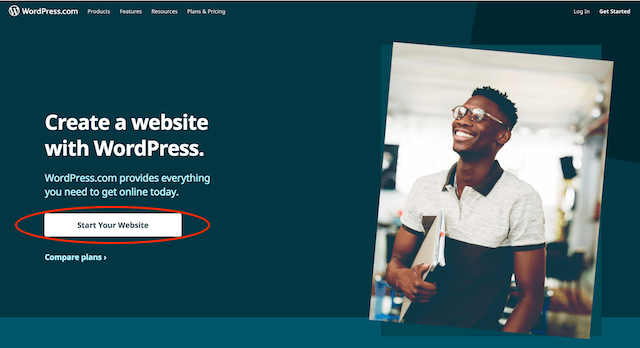
Step Two: Create an account using your Google login or another email address, and fill out the blog-related questions to the best of your ability.
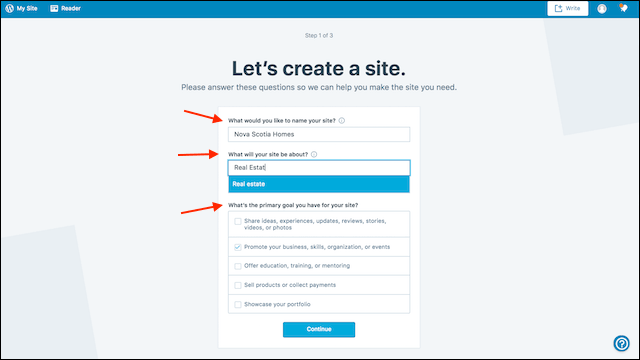
Step Three: Give your blog a web address. For the free version of WordPress, your address would be something like YourBlogName495474480.wordpress.com. Visitors are unlikely to remember a web address that’s this long.
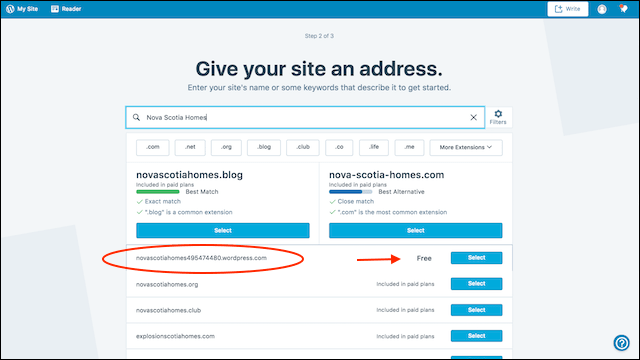
But if you register YourBlogName.ca and pay for WordPress hosting, your blog could be called YourBlogName.ca/blog. From a branding perspective, this blog address is much cleaner and easier to remember.
If you want something more (and are willing to pay for it)
For those who would like to take advantage of the universe of WordPress themes and plug-ins to create a blog that dazzles, you’ll need to do two things:
- Search for a domain if you don’t already have one.
- Buy hosting (tips on choosing the right web hosting here).
Once you have both of these, you’ll follow these five steps to download and install WordPress for your new blog. NOTE: This is not for the tech novice; it requires technical skill or the help of a techie friend.
2. Choose your theme
In the right-hand corner you’ll see, My Site. Click it and you’ll be presented with a full toolbar that lets you personalize your blog by using customizable themes. Some themes are free, while others come with a price tag.
To find a WordPress theme that’s in line with your small business, type overarching keywords — such as fashion, health, travel and art — into the search bar.
Once you select a theme that resonates with your company, WordPress shows you how it will look on a desktop, tablet and smartphone. This is extremely important, because you want your blog to be read by anyone and everyone, no matter where they are or what device they use.
Once you activate your blog, you’re on your way to creating your first post.
3. Add a few select plug-ins
Plug-ins amplify your blog. Think of these tiny software packets as handy additions that enhance functionality. There are plug-ins that can make your blog do all kinds of things — speed up page loads, play videos, sell things — you name it.
Here are a few examples:
WPForms
This plug-in generates user-friendly contact forms that invite your readers to connect with you.
BackupBuddy
BackupBuddy backs up your blog. You never know when you might have host or hardware issues — or (heaven forbid) get hacked.
Yoast
If you want to be found on the internet, you need to have a strong search engine optimization (SEO) plan. This plug-in will help you prepare your blog so search engines find it.
Not sure what plug-ins you absolutely must have? Check out this list. For instructions on how to choose and install WordPress plug-ins, read this terrific post.
While you’re at it, explore the features in the toolbar. That’s where you’ll establish your blog’s identity, such as incorporating the title, tagline, logo and site icon. You can select colours, backgrounds and fonts that are on-brand with your business.
4. Write your first post
The WordPress dashboard has all the tools you need to create, schedule and publish blog posts. To write your first one, select Posts > Add New in the left-hand margin. You’ll be presented with this screen.
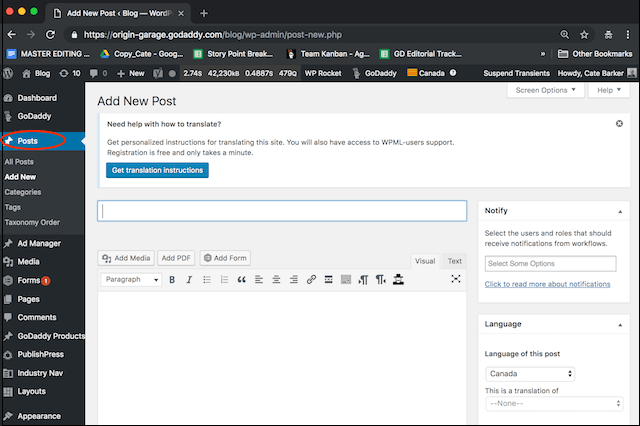
Every blog should have a headline and a date. Think of it like a newspaper. Your readers want to know at-a-glance what the post is about and how current the content is. It also puts pressure on you to keep your blog fresh. No one likes old news.
Aim to write 750 to 1,000 words per post.
Consider your first post an introduction to the world of readers. Explain who you are, what topics you plan to cover in your blog and how you got the idea to start a blog in the first place. Be personal and authentic; tell your story in detail.
It’s always best practice to write posts in a Word document before pasting it into WordPress (makes spell-checking easy). Add photos and video via the Add Media button below the title field (be sure to compress images and videos before loading). Use the Paragraph dropdown to highlight subheads (use Heading 2 for these).
Always check your work by clicking Preview before you Publish. You can also schedule your posts to publish on a future date and time. Pros suggest writing and scheduling a whole month’s worth of posts at a time. Then you can go about your business, knowing your blog will be spitting out new articles while you work.
By setting up a WordPress blog, you’re increasing your chances of being discovered. Prospective customers across Canada, and around the world, can find you through random search engine inquiries. Blogging is a way of making meaningful connections with your audience, while strengthening your online presence.
How to set up a WordPress blog in summary
As you learn how to start a blog with WordPress, think of it as a stage. It’s where you can talk about everything and anything that is relevant to your company. You can:
- Reveal new products and drop teasers for what’s to come.
- Answer questions from your customers.
- Be transparent with your company’s processes.
- Share your successes.
- Highlight exceptional employees.
- Showcase your company’s philanthropic spirit.
If you can publish new posts consistently over time on topics of interest to your customers, you will succeed in bringing more leads to your business. Happy blogging!


